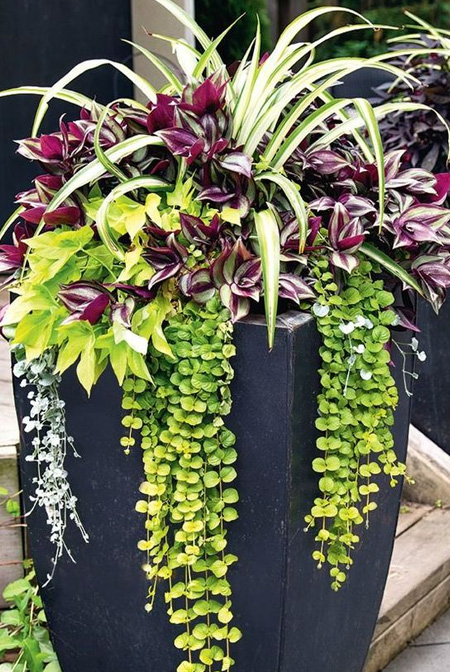Tips for an autumn garden
Whether it's the result of climate change or not, this past summer has been a challenge for any gardener. With the heat and heavy rains, most of our landscapes look overgrown and tired.
We turned to two landscape experts for their advice on how to keep your garden not just growing, but glowing this August.
Keep Your Pots Pretty
- Continue fertilizing annuals on a regular schedule
- Dead-head spent flowers for continued flowering
- Cut back leggy plants and overgrown plants
- Replace annuals that just don’t work anymore (most garden centres still have annuals, now at special discounts).
General Maintenance
- Fight the disease caused by heat and moisture by removing spent flowers and old leaves, as well as any excess growth that may cause poor air circulation
- Purchase cages or stakes to support taller plant material and keep them from leaning or laying on top of smaller plants
- Identify your pests (bring a bug or affected foliage to your local nursery) and find the proper pest control treatment. Many nurseries now offer eco-friendly pest and disease treatments that can be used in your vegetable garden as well
- Weed, weed, weed. Remember, to pull them before they flower to keep them from multiplying
- DON’T fertilize perennials, shrubs or trees. By mid- to late-August, most are beginning their preparation for winter
Know When to Water
In Gauteng gardens will be heading into a dry spell, whereas Cape Town will be wet and soggy.
- Buy a rain gauge to determine if your landscape needs water
- Use your rain gauge while you’re sprinkling. Take note of how long you need to water for the gauge to fill up to 5cm, and stick to that time in the future
- Water pots and annuals daily when it’s hot to keep flowers looking fresh and not droopy
Lawn Considerations
- Cut your grass as needed, and make sure not to cut it too short or it will burn.
- For evergreen grasses, water early in the morning. And keep an eye out for any fungus or insect problems.
- Turn on the sprinkler every three days instead of every day. This encourages a stronger root system, and you’re conserving unnecessary waste as well (both in water and cash).
Plan Ahead
Now that everything is in full growth mode, there’s no better time to take note of what’s working and what needs help for next year. This applies particularly to perennials and annuals. Take a walk around your yard to see what foliage works well and what colours you like. Then write down what you don’t like and what colours you need to balance your garden.
Taking photos will also help when it comes to locating spring and summer flowering bulbs. Whether you buy them or pass the job to your landscaper, this is the time to fill in the blanks.
And don’t forget your shrubs and trees. While pruning has to wait until they are dormant for the winter, August is a great month to decide which trees and shrubs need work come winter.

